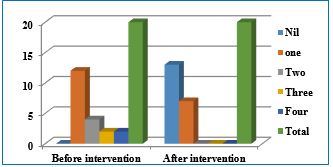A controlled clinical trial to evaluate the efficacy of Kulatthadi Ghrita in the management of Mutrashmari vis-à-vis Urolithiasis
Abstract
Mutrashmari is one of the most common conditions of Mutravahasrotas. The word Ashmari in Sanskrit denotes the stone or calculi and Mutra means urine. Mutrashmari is characterized by formation of stones anywhere in urinary tract. It is a dreadful condition and has potential to disturb the anatomy and physiology of the urinary system. Once it formed in the body it tends recurrence thus get difficult to cure. Hence it is included under Ashtamahagada. In modern medical system it is correlated with urinary calculi or Urolithiasis based on their signs and symptoms. Factors such as diet, water, climate, geographical conditions will also play major role in causing Mutrashmari. Ayurveda basically aims at prevention of formation of Mutrahmari along with braking and flushing of existing calculi. In Ayurveda texts administration of oral medication in different forms such as Ghrita, Kshara, Kashaya and other Shamanousadhi, Shodhana Karma and Shastra Karma are emphasized for management of Mutrashmari. Snehapana is the basic principle in the management which is to be adopted in primary stage of Mutrashmari. In the present study Kulatthadi Ghrita having properties such as Ashmaribhedana, Ashmari Patana and Mutrala activities has been taken up as indicated in Chakradatta for Ashmari, along with Nagaradi Kashaya and Badarashma Pishti.
Downloads
References
Acharya Y T Editor. Reprint (2016). Nibandhasangraha of Sri Dalhanacharya and Nyaya Chandrika Panjika of Gayadasa on Sushruta Samita of Sushruta,Sutra Sthana; Avaraneeyam adhyayam: Chapter 33, Verse 5. Varanasi; Chaukhamba Surabharati Prakashan: 2016. p-144.
Acharya Y T Editor. Reprint (2016). Nibandhasangraha of Sri Dalhanacharya and Nyaya Chandrika Panjika of Gayadasa on Sushruta Samita of Sushruta, Chikitsa Sthana;Ashmari Chikitsitam: Chapter 7, Verse 3. Varanasi; Chaukhamba Surabharati Prakashan: 2016. p-435.
Zhu C, Wang DQ, Zi H, Huang Q, Gu JM, Li LY, Guo XP, Li F, Fang C, Li XD, Zeng XT. Epidemiological trends of urinary tract infections, urolithiasis and benign prostatic hyperplasia in 203 countries and territories from 1990 to 2019. Mil Med Res. 2021 Dec 9;8(1):64. doi: 10.1186/s40779-021-00359-8. PMID: 34879880; PMCID: PMC8656041.
Shenoy K.R. Manipal Manual of Surgery, 2nd edition. New Dehli; CBS publisher & disributors (pvt) Ltd; 2009: p. 618.
Tripathi I. Editor, 4th edition. Vaidayaprabha (hindi) commentary on Chakradatta of Chakrapanidatta., Ashmari Chikitsa: chapter 34, Verse 328-39. Varanasi: Chaukhamba Surabharati Bhawan, 2015: p-213.
Tripathi I. Editor, 4th edition. Vaidayaprabha (hindi) commentary on Chakradatta of Chakrapanidatta., Ashmari Chikitsa: chapter 34, Verse28. Varanasi: Chaukhamba Surabharati Bhawan, 2015: p-212.
Joshi D Editor, 2nd edition. Rasamritam of. Vaidya Jadavji Trikamji Acharya. Varanasi; Chaukhamba Surabharati Bhawan, 2003; p. 127.














